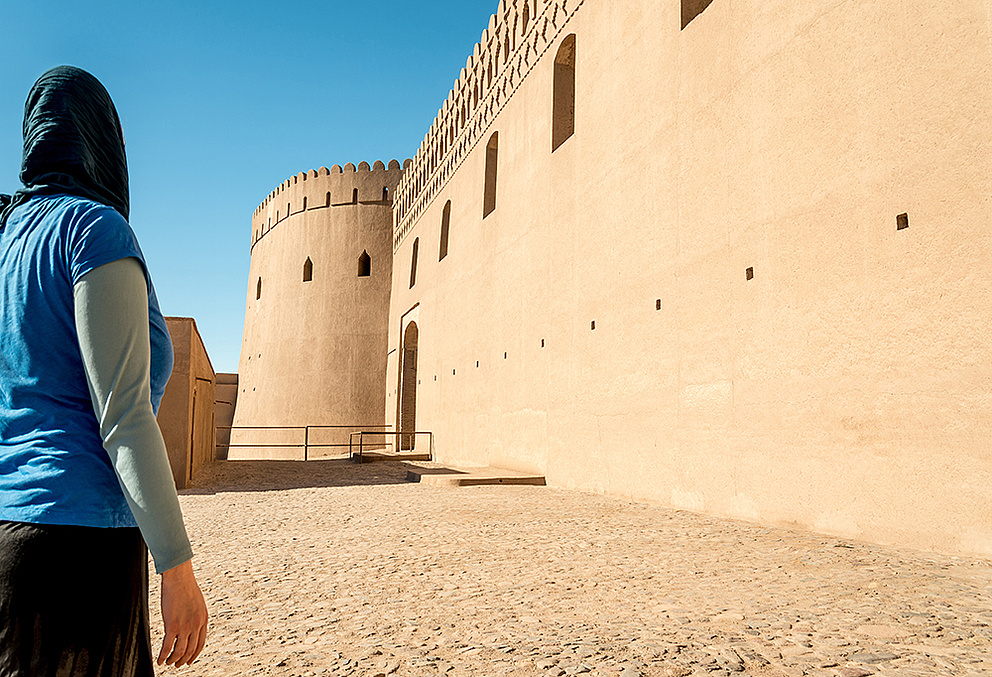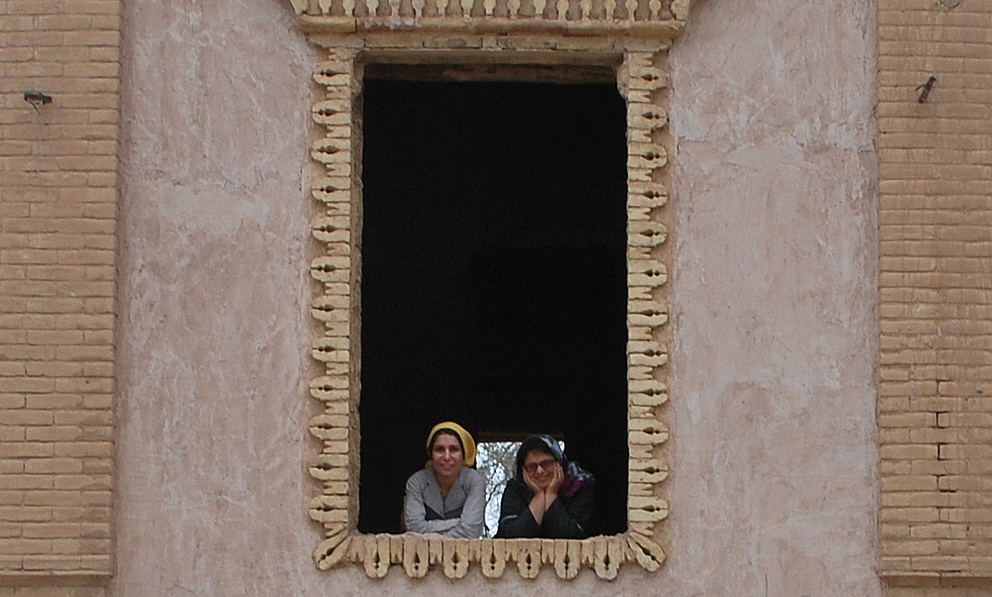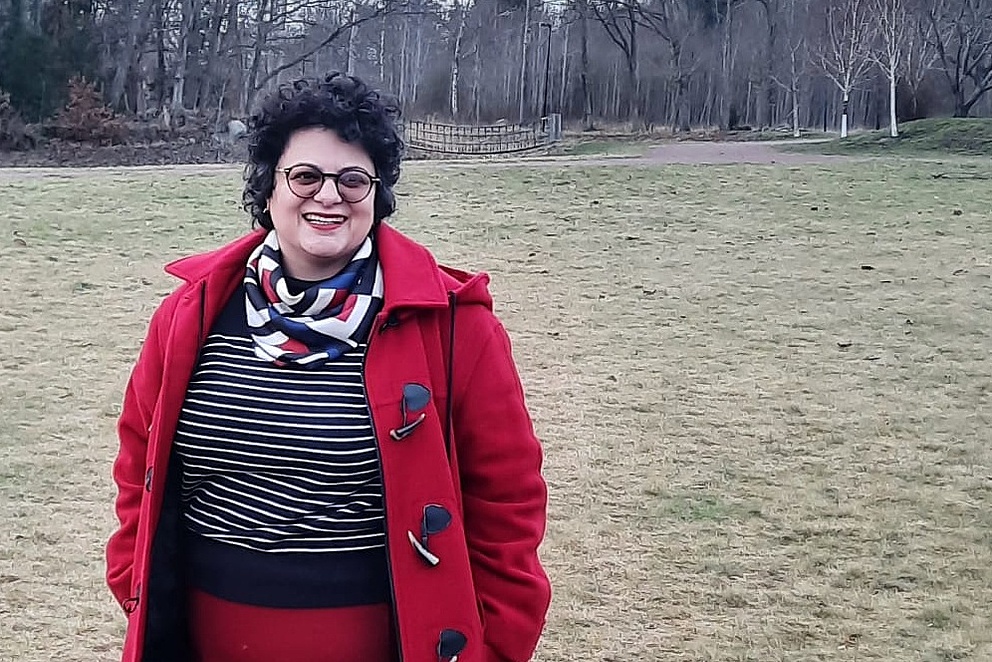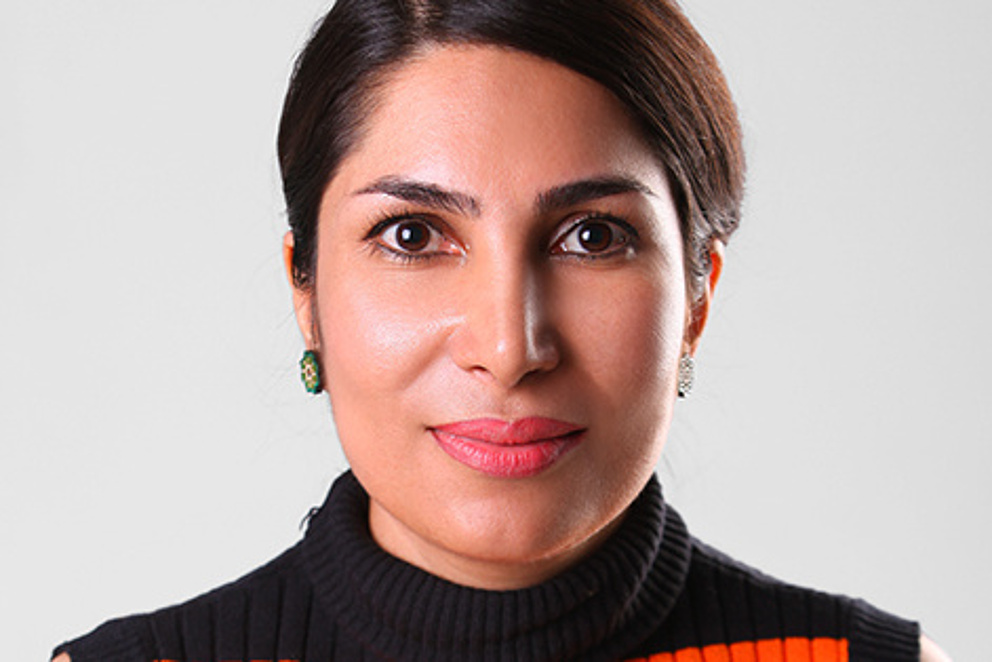

Contact
Press, Communications and Marketing
Tel.: +49 228 833-144
Fax: +49 228 833-441
presse[at]avh.de
Ms. Papoli-Yazdi, Ms. Dezhamkhooy, in your recent book Homogenization, Gender and Everyday Life in Pre- and Trans-modern Iran, which was published with assistance from the Humboldt Foundation, you present a new interpretation of Iranian history during the 19th and early 20th centuries. What is different about this new interpretation?
Maryam Dezhamkhooy: History has long been written by men for men. Our research group GAP END, which is comprised of women and men, wanted to tell the story of the pre-modern era of our country in a different way – namely, with a focus on the everyday lives of ordinary people, women, homosexuals and non-binary persons.
Leila Papoli-Yazdi: Our work – which was based on a variety of sources including more than 300 interviews, written texts, everyday objects, statistics and oral accounts – particularly deals with the rise of modern Iran and the processes that accelerated discrimination within society. And it is about the overlooked and forgotten stories of ordinary people. We want to make their stories visible. The fact that traditional archaeology is primarily interested in the upper strata of society is a serious weakness.
In what way?
Papoli-Yazdi: When we reconstruct an era, we can’t do it without including the stories of ordinary people in all their diversity. The aim of our approach of examining and investigating the day-to-day lives of these people is to convey to everyone that each and every person is an important part of the story.
What particularly surprised you in your work?
Dezhamkhooy: For me, each chapter contains new facts and evidence that surprised me. For example, we were able to prove for the first time that same-sex relationships – particularly between men, but also between women – were common in pre-modern Iran, in other words, during the 19th century. Today, homosexuality is illegal in Iran and punishable by death and activists must fight for the rights of homosexual people. This contrast between then and now was a downright shock for us. On top of this, we were able to prove that water systems were managed by women. Given that water has always been scarce in Iran, particularly in the eastern part of the country, this was an important responsibility. We didn’t expect this finding and it confronted us with our own stereotype-driven thinking.
Which stereotypes are you thinking of here?
Dezhamkhooy: I’m talking about the assumption to be found in western theories that women in Islamic societies have always been oppressed. Our research into everyday life showed us that society and the social lives of people in the 19th century were entirely different than previously assumed and were absolutely inconsistent with popular clichés. I was very impressed by how tolerant society was back then. Directing the focus of our research to everyday life definitely spawned new perspectives for us in our analysis, not to mention with respect to the subject of gender.

Was gender archaeology always your research focus?
Dezhamkhooy: I grew up in a liberal-minded home and first realised as a result of my scientific work that the situation in my country wasn’t always like it is today. Leila and I met in 2003 during an ethnoarchaeology project that we conducted shortly after the earthquake in Bam. One of the things we discovered there, in the house of a rich family, was the diary of a trans kid. The work we did in Bam shifted the subjects of gender and discrimination into the focus of my research.
Papoli-Yazdi: The project in Bam was pivotal for me as well. When our research team arrived there, our first question was: “What can we do for the people here?” By focussing on the subject of gender, we were able to make our research discipline more functional and establish a direct link to the present.
What do you mean by that?
Dezhamkhooy: By examining gender topics in our research and placing them in an historical context, we can set a discussion on diversity into motion. We show that gender binarism and the discrimination of LGBTQIA+ persons haven’t always existed. Our research findings and a look at the past make it clear that the world can be different.
Papoli-Yazdi: It is important to keep drawing attention to gender topics. One-hundred percent gender equality does not exist even in countries like Iceland. I’m concerned that people in Europe apparently have the feeling that their rights are safe and secure. They seem to have lost the motivation to preserve these rights – rights which others had to fight hard for in the past. If we don’t protect these rights, we’ll lose them. Just like climate change, the subject of gender and related discrimination are not specific to any particular country. What is currently happening to women in Afghanistan, for example, could also happen in any other country in the world. We should open up the discussions taking place in the academic world for this as well.
What kind of space does gender archaeology have in Iran’s academic world?
Papoli-Yazdi: Archaeology in Iran is fundamentally very conservative. However, when we began our work in the early 2000s, the research conditions at the university in Teheran were somewhat better than they are today. There were male professors who fostered and supported us and other women. Academic exchange took place in privately organised discussion groups which were also attended by many men who were interested in gender subjects. When Ahmadinejad came to power in 2009, we and other women colleagues lost our jobs, one after another. To this day it is very difficult to work on this subject in Iran. But we are doing our best and are trying to carry on our work.
Ms. Papoli-Yazdi, you came to Germany in 2012 with a Georg Forster Research Fellowship from the Humboldt Foundation and you, Ms. Dezhamkhooy, followed suit in 2016. What were the most important experiences for you during that time?
Papoli-Yazdi: The most important things for me in Berlin were that I had access to libraries and could attend conferences and establish contacts.
However, the most important thing I got from living abroad was another perspective on my history. I delved into colonialism, post-colonialism and totalitarianism and recognised parts of my own life and the lives of my fellow countrymen and women in what I found.
Dezhamkhooy: Just like Leila, I expanded my horizon while I was abroad. She had also recommended the Humboldt Foundation to me because she had already applied to the foundation for a fellowship in Germany. What particularly impressed me about the Humboldt Foundation in comparison to other foundations was how it gives thought to women researchers’ role in families or as mothers and provides special assistance and support for them. Because no woman should have to give up her career due to the demands of raising a family. Before I came to Heidelberg in 2016, I worked at a very conservative university in Iran. There were no further prospects for me there so I applied for a postdoc fellowship from the Humboldt Foundation. That was a turning point in my academic career. Even though archaeology tends to be conservative in Germany, I have freedom as a researcher and my gender doesn’t play a role on a personal level. At the same time I have to say that inequality and discrimination exist on a structural level in the German science system too. For example, men still hold many of the higher academic positions.

Leila Papoli-Yazdi
Dr Leila Papoli-Yazdi studied archaeology of the recent past at the University of Teheran and gained her doctorate in 2008. While working on her doctorate, she led a project in the Iranian city Bam, which was severely damaged by an earthquake. This project is considered to be pioneering in the archaeology of recent history in the Middle East. In addition, Leila Papoli-Yazdi has headed several research projects in Pakistan, Kuwait and Iran. In 2012 she was chosen to receive a Georg Forster Fellowship which took her to the Institute for Near Eastern Archaeology at Freie Universität Berlin where she held an international visiting professorship for gender research during the 2014/2015 winter semester. Following this, she worked at the University of Gothenburg. In 2021, she joined the UNESCO Chair on Heritage Futures at Linnaeus University in Kalmar, Sweden.

On 11th of February, the important role women and girls play in science and technology is being acknowledged around the world. What advice would you like to pass on to them along their way in science?
Papoli-Yazdi: My very first recommendation would be to team up with others and establish a group of three to six people. A group is stronger than an individual and can handle challenges better. My second recommendation: You should always be aware of the fact that in science your voice is wanted and important. Sometimes you meet people who want you to believe that your work is supposedly worthless because someone has already given thought to that subject at one time or another in the past. This is not true because young researchers can always update and invigorate that work and enrich it with their own perspective. Your voices are important.
What role can funding organisations like the Humboldt Foundation play in empowering women and girls in science?
Dezhamkhooy: First and foremost, the support of foundations with a gender policy is very important at the start of a woman researcher’s career. The Humboldt Foundation already has an eye on the subject of equality of opportunity and, as part of the funding it provides, grants family benefits for researchers abroad and child benefits for single parents. This is really important because there continues to be considerable fear of having to abandon a scientific career due to a pregnancy.
Papoli-Yazdi: When women researchers receive funding, the entire package should be accepted. When my son was born, I took him everywhere with me, often accompanied by a feeling of shame. I was able to let it go for the first time at a meeting with the then museum direct in Peshawar. When he heard that my son was in a day care centre, he had him brought to me. I felt very supported. We should be accepted as we are, without any underlying expectations.
What kind of expectations do you mean?
Papoli-Yazdi: I mean expectations of women that exist at structural level. In other words, the expectation that it would be better when women researchers don’t have children at all or that women researchers should subordinate their occupation to their role as mother. There are also a lot of implicit demands regarding the choice of research topics in science.
Dezhamkhooy: I have the impression that subjects like totalitarianism and racism still tend to be associated with men. Leila and I are planning a project on the subject of “garbage”. If you were to ask people in academia, many would probably say that this isn’t a normal subject for women. But that’s not going to stop us.

Maryam Dezhamkhooy
Dr Maryam Dezhamkhooy studied historical archaeology at the University of Teheran where she earned her doctorate in 2011. Like Leila Papoli-Yazdi, she was also part of the research project in Bam. Maryam Dezhamkhooy came to the University of Heidelberg in 2016, likewise as a Georg Forster Fellow. She then conducted research at the Institute for Ethnology at the University of Frankfurt. The former assistant professor of archaeology at the University of Birjand is currently an affiliated researcher at the Käte Hamburger Centre for Apocalyptic and Post-apocalyptic Studies where she is working on notions of nation, citizenship and women’s movement in Iran of the contemporary past.

What will this project be about?
Papoli-Yazdi: The mountains of rubbish and the number of people who have settled near them have grown worldwide since the end of the Second World War. We want to examine these communities from an archaeological standpoint. What marginalisation do they experience, what gender rules exist, how does the climate crisis influence them? We hope that we will receive support for our work and we can start with initial studies in the near future.
Other than this, what do you hope for the future of your field of research?
Dezhamkhooy: We need much more involvement on the part of male colleagues and people from the LBGTQIA+ community. At the moment, gender archaeology is a female-dominated field. This is not good for this field because it leads to many aspects going unexplored – and it is not good for our future in general. Gender discrimination affects women, men, non-binary people and their families. If we want to change the situation worldwide, each and every one of us must contribute something.
Author: Esther Sambale
